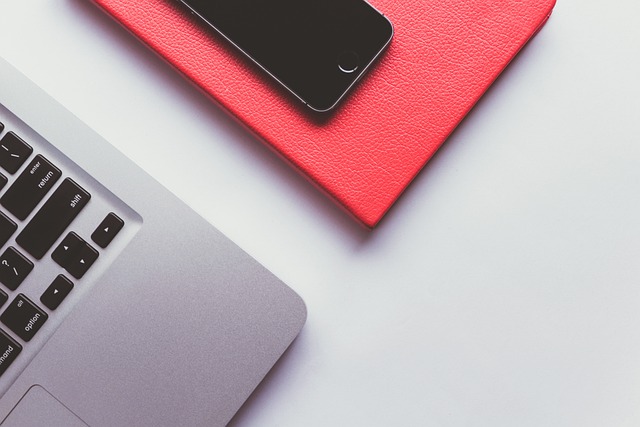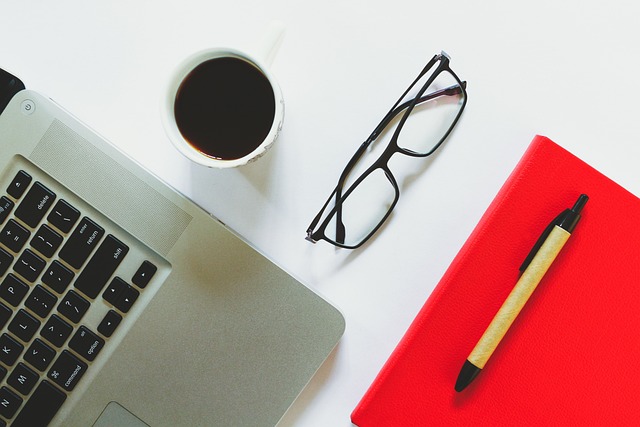How Is Facial Recognition Technology Being Used?
In security, facial recognition is a game changer. Imagine walking through an airport, and instead of fumbling with your boarding pass, you simply look at a camera. That’s right! Facial recognition systems can match your face to your passport and streamline your journey. It’s like having a personal concierge for airport security.
Retail is another area where facial recognition is making waves. Picture this: you’re shopping, and the store’s system recognizes you as a loyal customer. It can then suggest products based on your preferences or even alert staff to assist you. It’s a bit like having a personal shopper who knows exactly what you like.
Then there’s the realm of personal devices. Many smartphones now use facial recognition to unlock your phone or authorize payments. This isn’t just about convenience; it’s about adding an extra layer of security. It’s like having a digital bouncer that ensures only you can access your device.
In healthcare, facial recognition technology is being used to monitor patient conditions and manage records. It can help identify patients, track their medical history, and even detect signs of distress or health issues just by analyzing facial expressions. Think of it as a high-tech health monitor that keeps a close eye on your well-being.
Educational institutions are also tapping into this technology. Facial recognition can manage attendance, ensuring that students are present and accounted for without the need for manual roll calls. It’s like having a super-efficient assistant who never misses a beat.
As you can see, facial recognition technology is more than just a futuristic concept. It’s becoming an integral part of our everyday lives, making things easier, safer, and more personalized.
From Security to Shopping: The Expanding Role of Facial Recognition Technology
Think of facial recognition as a superpower for retailers. It allows them to identify returning customers instantly, making personalized recommendations based on past purchases or browsing history. For instance, if you frequently buy athletic gear, the next time you visit, you might find personalized suggestions for the latest sportswear or discounts on your favorite brands waiting for you. It’s like having a personal shopping assistant who knows your preferences without even asking.
Moreover, this technology isn’t just about convenience. It’s also about efficiency. By using facial recognition to streamline checkout processes, stores can reduce wait times and make shopping a breeze. No more fumbling for your card or entering PINs. A simple smile at the checkout terminal could be all it takes to finalize your purchase.
But let’s not forget the broader implications. As facial recognition becomes more integrated into various aspects of our lives, from security to shopping, it raises important questions about privacy and data security. The technology’s ability to track and analyze personal data means that while your shopping experience might become more tailored and convenient, it’s crucial to ensure that your personal information is handled responsibly and securely.
So, as facial recognition continues to expand its role from securing spaces to enhancing shopping experiences, it’s clear that its impact is profound and far-reaching. It’s reshaping the way we interact with the world, making our experiences smoother and more personalized than ever before.
Facial Recognition Unveiled: How This Technology is Transforming Everyday Life
At its core, facial recognition works like a highly advanced form of security. Just as you might unlock your smartphone with a glance, this technology scans and identifies facial features to confirm your identity. It’s as if your face becomes a unique password—secure and incredibly personal. For instance, when you walk into a secure building, facial recognition can grant you access without the need for ID cards or key fobs. It’s a game-changer for security, making it more convenient and harder to bypass.
But it’s not just about security. Facial recognition is revolutionizing customer service, too. Think about how retailers are using this technology to enhance shopping experiences. When you enter a store, facial recognition systems can track your preferences and offer tailored recommendations, making your shopping spree much more enjoyable. It’s like having a personal shopping assistant who knows you better than you know yourself!
Beyond retail, this technology is also transforming how we interact with our devices. From unlocking phones to logging into accounts, facial recognition is making everyday tech interactions smoother and more intuitive. It’s like magic—your face becomes the key to unlocking your digital world.
The possibilities are endless, and as facial recognition technology continues to evolve, it’s bound to become an even more integral part of our lives, blending seamlessly into the fabric of daily routines and making tasks easier and more efficient.
Behind the Lens: How Facial Recognition is Shaping Modern Security Measures
Facial recognition operates on a fascinating principle: it’s all about mapping and analyzing the unique features of your face. Just like each fingerprint is distinct, so is each face. The technology uses a combination of algorithms and neural networks to create a digital map of your facial features. Think of it as a digital fingerprint that’s harder to fake than the real thing.
So, how does this shape our security? For starters, it makes access control both safer and more convenient. Imagine you’re at a secure facility; instead of fumbling with badges or PINs, a quick scan of your face gets you in. No more lost IDs or forgotten codes—just seamless entry.
Then there’s the impact on public safety. In crowded areas like airports or stadiums, facial recognition systems can quickly identify known threats or missing persons. It’s like having a super-sleuth that never sleeps, constantly scanning and analyzing data to keep us safe.
But it’s not all smooth sailing. Privacy concerns are front and center. How do we balance convenience with the need for privacy? With facial recognition’s rapid evolution, this is a hot topic that society needs to address carefully.
Facial Recognition Goes Mainstream: Innovations and Applications You Need to Know
Think of facial recognition as a supercharged security system. It’s like having a high-tech bouncer who knows exactly who you are, no ID required. This tech has evolved from basic photo recognition to sophisticated systems that can identify people in real-time, even in a crowded street. The accuracy and speed are nothing short of amazing.
So, what’s driving this mainstream adoption? For starters, it’s the leap in artificial intelligence that powers these systems. Modern facial recognition can analyze thousands of data points on your face in seconds, making it highly reliable. Plus, it’s not just about security. Retailers are using this tech to offer personalized shopping experiences. Ever walked into a store and felt like it was tailored just for you? Facial recognition is playing a role here, suggesting products based on your preferences.
Public spaces are also benefiting from this technology. Imagine a city where traffic flow is optimized, and emergencies are managed with pinpoint accuracy, all thanks to real-time facial recognition. It’s transforming the way we interact with our environment.
Moreover, the privacy and ethical discussions surrounding facial recognition are vital. While the benefits are enormous, the need for transparent and responsible use is equally crucial. Balancing innovation with privacy concerns will be key to ensuring this technology enhances our lives without crossing ethical boundaries.
Facial recognition isn’t just a tech trend; it’s reshaping how we live, work, and interact. Whether it’s enhancing security, personalizing experiences, or transforming public services, its impact is profound. And as this technology continues to advance, its role in our daily lives will only become more significant.
The Face of the Future: How Facial Recognition Technology is Revolutionizing Various Industries
In banking, for instance, facial recognition is stepping up security like never before. Picture walking into your bank, and instead of fumbling with cards or passwords, you simply smile at a camera. Your face becomes your password, providing an extra layer of security that’s hard to replicate. This is not only making transactions faster but also significantly reducing the risk of fraud.
Then there’s the healthcare sector, where facial recognition is revolutionizing patient care. Hospitals are using this technology to identify patients quickly, reducing the chances of medical errors. Imagine a scenario where a doctor, upon looking at a patient, instantly has access to their medical history, allergies, and treatment plans—all thanks to a quick facial scan. This efficiency not only enhances patient safety but also streamlines administrative tasks.
Retail is another arena where facial recognition is making waves. Think about walking into a store where the system instantly recognizes you and suggests products based on your past preferences. It’s like having a personal shopping assistant who knows your taste and helps you find exactly what you’re looking for—without the need for any physical interaction.
In essence, facial recognition is transforming industries by adding layers of convenience, security, and personalization. It’s the ultimate tool that’s bridging the gap between technology and human interaction, offering a glimpse into a future where our faces are the gateways to a smarter, more efficient world.
Facial Recognition in the Spotlight: Unpacking Its Uses Across Different Sectors
But it’s not just about shopping. In security, facial recognition is a game-changer. Think of it as a digital bouncer at the club, ensuring only authorized individuals gain access. This technology enhances security in public spaces, airports, and even your smartphone, making unauthorized access a thing of the past.
Healthcare also benefits significantly. Facial recognition helps in identifying patients quickly, ensuring that medical staff have the correct information at their fingertips. It can even assist in monitoring patient conditions, alerting medical professionals to potential issues before they become critical.

Moreover, facial recognition plays a role in law enforcement. It aids in locating missing persons and identifying suspects more efficiently, potentially solving cases faster than ever before. This technology is like having a digital detective, tirelessly working to make communities safer.
With its diverse applications, facial recognition is more than a trend; it’s a transformative tool reshaping how industries operate and interact with individuals. Whether you’re shopping, securing a space, managing health, or enjoying entertainment, facial recognition is at the forefront of innovation, making its mark in every corner of our lives.
From Airports to Apps: How Facial Recognition is Enhancing Efficiency and Security
But it doesn’t stop at airports. Facial recognition apps are reshaping how we interact with technology daily. From unlocking your phone with a glance to verifying your identity for online banking, it’s making our digital lives more secure and convenient. Picture this: instead of remembering complex passwords, you simply smile at your device. It’s not only faster but also more reliable, reducing the risk of unauthorized access.
On a broader scale, facial recognition is also enhancing public safety. By identifying individuals in crowds or accessing video feeds, it helps law enforcement agencies spot potential threats more quickly. Think of it as a vigilant eye in a crowded room, always scanning for anything out of the ordinary.

As this technology continues to advance, its integration into everyday life promises to make our interactions with both physical spaces and digital platforms faster, more secure, and more intuitive.
